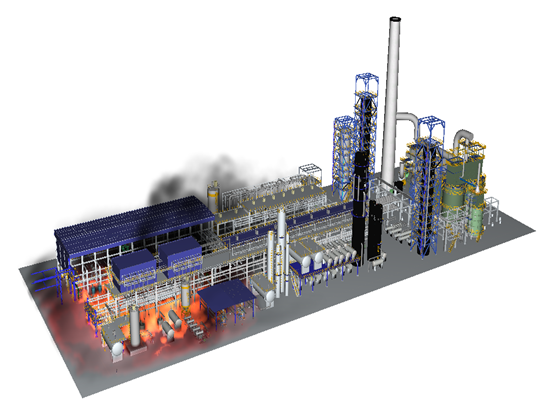
The Design and Special Evaluation Department has completed the numerical simulation and computer modeling of typical fire and explosion consequence scenarios at a large-scale petroleum refining and petrochemical base
- Suiren Fire Technology Co., Ltd
- January 22, 2020

Recently, our company successfully submitted and passed the review by an expert panel for the numerical simulation and computer modeling of typical fire and explosion consequence scenarios at a large-scale petroleum refining and petrochemical base in China.
Based on thorough investigation and research, and leveraging extensive information data collection and technical expertise, our assessment team has provided professional opinions on the fire safety status, operation of fire safety management systems and mechanisms, emergency response capabilities, fire risks under leakage conditions in production units and oil storage tank areas, functional availability of on-site fire facilities, and personnel evacuation simulations for typical scenarios at the petroleum refining and petrochemical base. We have submitted a report accordingly.
To further understand the situation, based on the opinions of the management team, we selected three fire and explosion scenarios with significant typicality at the base: a 10×104m³ crude oil storage tank, a 4000m³ LPG spherical tank, and a 3.6 million tons/year hydrocracking unit. We conducted numerical simulations and computer modeling for each scenario to simulate the combustion and explosion effects. The simulation was based on the "most dangerous condition" principle. Specifically, it involved utilizing principles of fluid dynamics and combustion, numerical computation methods, and relevant theoretical models to dynamically and quantitatively simulate and calculate the processes and damage effects of typical safety accidents such as gas diffusion, liquid fires, and vapor cloud explosions from key hazardous sources. We quantitatively analyzed the hazards of accidents under different meteorological conditions and operating conditions, including the distribution of hazardous gases, flow of high-temperature smoke, thermal radiation damage, and reduction in visibility.
During the progress of this project, the Design and Special Evaluation Department referred to a vast amount of cutting-edge literature and engaged in multiple discussions with peers in the domestic and international fire industry, as well as experts and scholars from other fields such as military chemical defense. The simulation results of this project have significant guiding and reference value for fire safety management, firefighting operations, emergency preparedness, and fire training.
The project team has submitted specific recommendations to the base, including strengthening zero-risk control of key areas, adjusting the configuration of firefighting equipment and facilities, enhancing operational protection, and adjusting the deployment of firefighting command headquarters.